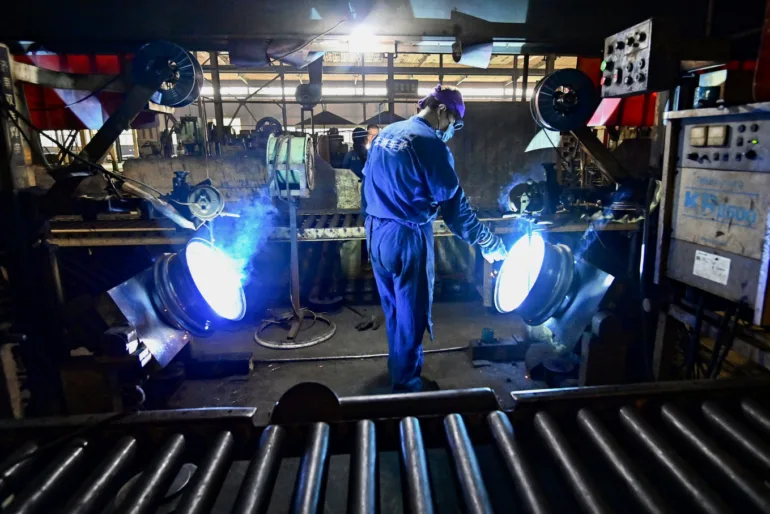China’s factory activity contracted in April, official data revealed on Wednesday, as Beijing pointed to a “sharp shift” in the global economy amid an escalating trade war with the United States.
New US tariffs, reaching 145% on many Chinese goods, took effect in April, prompting Beijing to retaliate with fresh 125% duties on American imports. The consequences of these measures began to show in April, with the Purchasing Managers’ Index (PMI)—a key indicator of industrial output—falling to 49, down from March’s 50.5, and below the 50-point mark that signals the threshold between growth and contraction. This was steeper than the 49.7 forecast in a Bloomberg survey.
“In April, the PMI drop was driven by factors such as a high base from earlier rapid manufacturing growth and a sharp shift in the external environment,” said Zhao Qinghe, a statistician with the National Bureau of Statistics (NBS).
The non-manufacturing PMI, which tracks activity in the services sector, also fell to 50.4, down from 50.8 in March.
Economists have warned that the growing trade disruption between the US and China, two tightly interconnected economies, could undermine businesses, raise consumer prices, and potentially trigger a global recession.
While Chinese exports surged by over 12% in March as businesses rushed to beat tariff deadlines, the weak manufacturing PMI in April is largely attributed to the ongoing trade war. Zhiwei Zhang, President and Chief Economist at Pinpoint Asset Management, noted, “The trade war is the main driver of the weak PMI. Macro data from both China and the US will likely weaken further as trade policy uncertainty delays business decisions.”
China’s economy, the world’s second-largest, has struggled to recover fully from the Covid-19 pandemic and is also facing sluggish domestic demand and a protracted property crisis.
“China’s economy is under pressure as external demand weakens,” said Zichun Huang, a China economist at Capital Economics. “Although the government is ramping up fiscal support, it’s unlikely to fully counter the negative effects. We expect GDP growth of just 3.5% this year.”
Last year, authorities rolled out aggressive stimulus measures, including rate cuts and some easing of home purchasing restrictions. In March, government leaders set a target of creating 12 million new urban jobs by 2025 and aimed for a growth rate of 5% in 2024—a target many economists consider ambitious.
AFP


